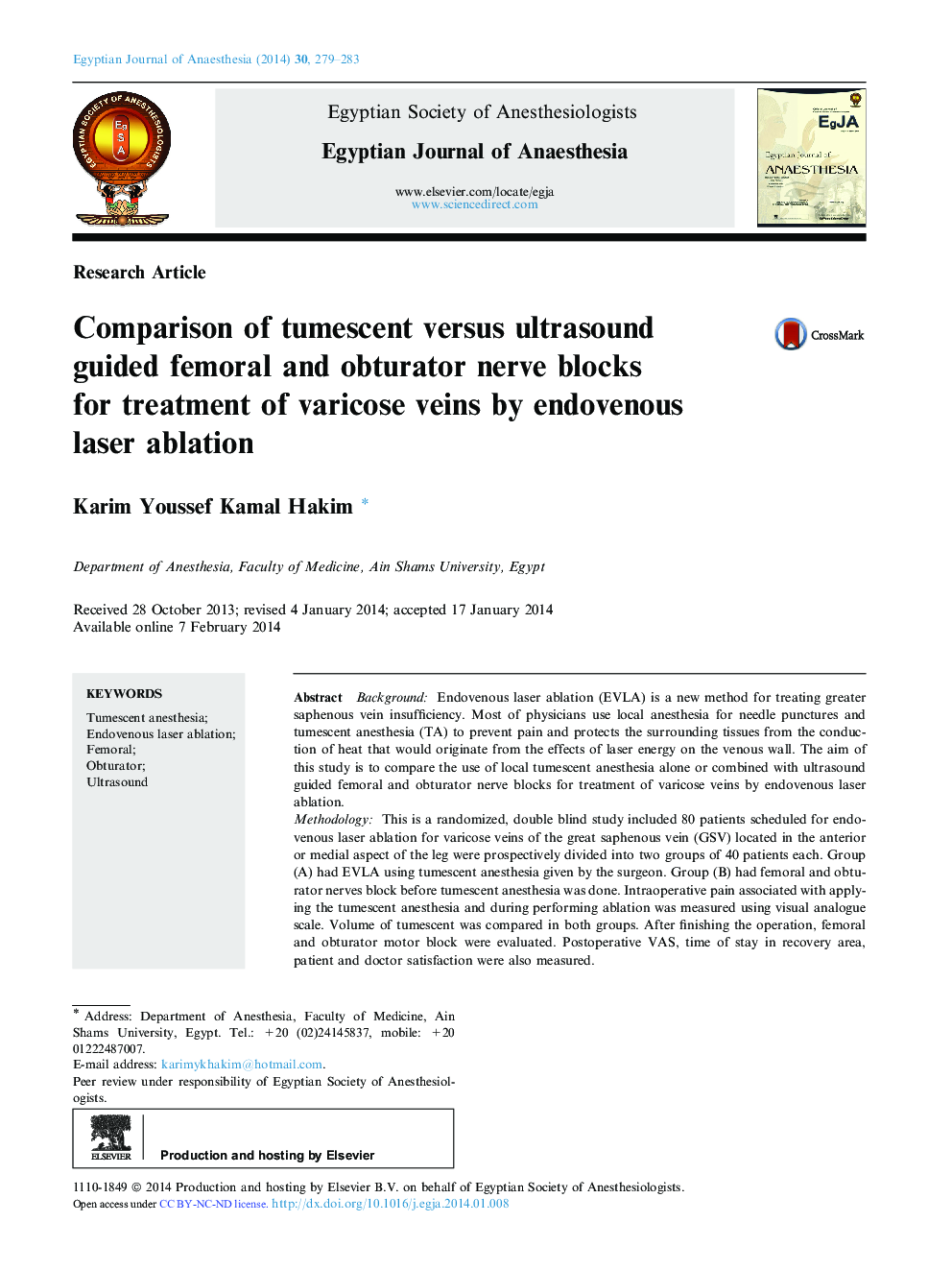| کد مقاله | کد نشریه | سال انتشار | مقاله انگلیسی | نسخه تمام متن |
|---|---|---|---|---|
| 2756300 | 1567416 | 2014 | 5 صفحه PDF | دانلود رایگان |
BackgroundEndovenous laser ablation (EVLA) is a new method for treating greater saphenous vein insufficiency. Most of physicians use local anesthesia for needle punctures and tumescent anesthesia (TA) to prevent pain and protects the surrounding tissues from the conduction of heat that would originate from the effects of laser energy on the venous wall. The aim of this study is to compare the use of local tumescent anesthesia alone or combined with ultrasound guided femoral and obturator nerve blocks for treatment of varicose veins by endovenous laser ablation.MethodologyThis is a randomized, double blind study included 80 patients scheduled for endovenous laser ablation for varicose veins of the great saphenous vein (GSV) located in the anterior or medial aspect of the leg were prospectively divided into two groups of 40 patients each. Group (A) had EVLA using tumescent anesthesia given by the surgeon. Group (B) had femoral and obturator nerves block before tumescent anesthesia was done. Intraoperative pain associated with applying the tumescent anesthesia and during performing ablation was measured using visual analogue scale. Volume of tumescent was compared in both groups. After finishing the operation, femoral and obturator motor block were evaluated. Postoperative VAS, time of stay in recovery area, patient and doctor satisfaction were also measured.ResultsPain on application of tumescent anesthesia and during surgery revealed that group (A) had more intense pain than group (B). Volume of tumescent used during surgery; group (B) used statistically significant less tumescent solution than group (A). Motor block was measured after finishing the operation, 100% of group (A) had no restriction to active movements while 2.5%, 80% and 7.5% had no restriction, mild restriction and moderate restriction to active movements, respectively in group (B). Group (A) had more pain than group (B) postoperatively. Duration of post procedure stay in recovery area showed no statistically significant difference between the two studied groups. Patients and doctors satisfaction was significantly higher in group (B) in comparison to group (A).ConclusionUltrasound guided femoral and obturator nerve blocks combined with tumescent anesthesia are effective methods of anesthesia during endovenous laser ablation than using tumescent anesthesia alone.
Journal: Egyptian Journal of Anaesthesia - Volume 30, Issue 3, July 2014, Pages 279–283
